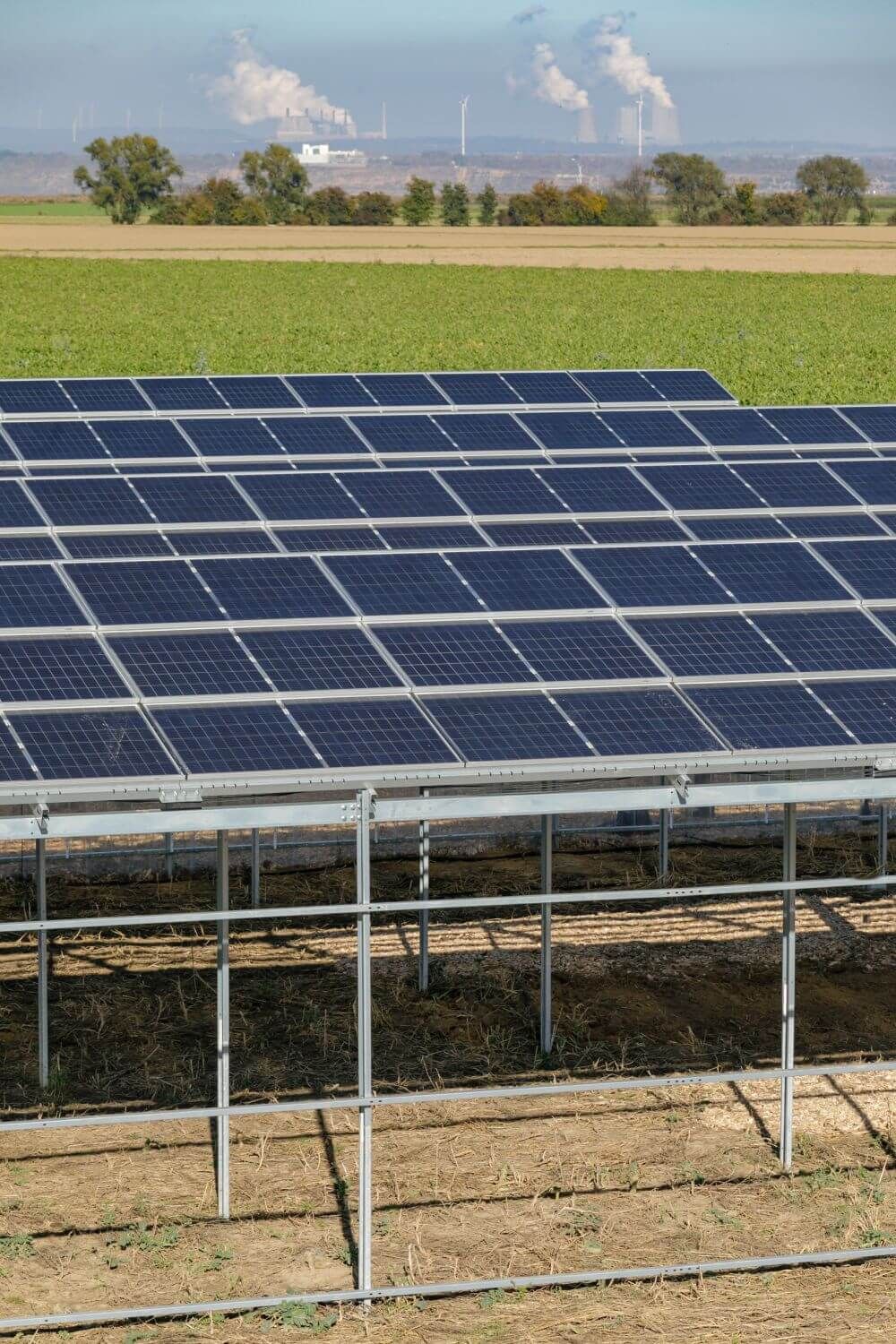| Duration: | 12/2019 -12/2021 |
| Contracting Authority/ Sponsors: | Bundesministerium für Bildung und Forschung (BMBF) |
| Project Partners: | BioökonomieREVIER Forschungszentrum Jülich IEK-5 Forschungszentrum Jülich IBG-2 |
| Projektfokus: | |
| Website: |
https://www.biooekonomierevier.de/Innovationslabor_APV_2_0 |
Innovation Lab APV 2.0 – Coupling of Crop Production and Photovoltaics

The APV 2.0 innovation lab aims to optimize agricultural resilience and yields while expanding renewable energy by establishing a variety of agrivoltaic systems. Coupled radiation models and simulation of light availability and distribution enable an analytical and comprehensive planning methodology, doing justice to the dual land use of agrivoltaics. The installed PV module tracking systems are controlled by novel algorithms, enabling optimized light use for solar power generation and crop production. The rainwater harvesting system of the APV 2.0 innovation lab warrants the exploration of synergetic irrigation systems in agrivoltaics.
As a result of its long history of lignite mining, the Rhenish mining region is facing particularly substantive changes in its structural transformation. The BioökonomieRevier Rhineland initiative for structural change, coordinated by the research center Forschungszentrum Jülich, aims to use 15 innovation labs to quickly transfer scientific ideas into economic practice in order to sustainably shape these change processes. The first model region for biobased, sustainable economic activity is to develope out of the funding provided by the BMBF's emergency program for the coal exit. The APV 2.0 innovation lab is intended to resolve existing land use conflicts: On the one hand, the high-quality soils in the Rhineland are ideally suited for high-yield agricultural management; on the other hand, there are also demands placed on the limited resource of land by the targeted decentralization of electricity generation. Agrivoltaics, a coupling of the energy and agricultural sectors, can mitigate this conflict by means of elevated PV modules above the agricultural cropland. At the same time, innovative approaches to an integrated bioeconomy are realized.
Various PV systems are being installed on the agrivoltaics research facility of approx. 1 ha near Alt-Morschenich, not far from the Hambach lignite opencast mine. Here, bifacial, tracked and fixed PV modules, different orientations (to the south or east-west) can be investigated for their influence on growth and yield of the crops grown under them (especially value crops, fruits, vegetables). A phenotyping facility integrated into the substructure allows for differentiated recording of diurnal and seasonal changes in the crops. To enable efficient tracking for the integrative nature of agrivoltaics, novel algorithms are being explored with a combined light simulation for PV and crop development. After all, changing the module tilt angle can increase solar availability for the crop at critically low irradiation, but also protect it from extreme weather (heat, hail) when moved into a horizontal position. The solar electricity production, which depends on the position of the sun, is also manageable via module control and is quantified in the research facility. The integrated rainwater harvesting system is controlled via sensors to explore and implement resource-efficient irrigation with the collected water. In addition to the agricultural, technical and techno-economic considerations, acceptance issues will also be investigated. Novel concepts for systematizing modes of representation will ensure that visualizations of agrivoltaic systems can present the agrivoltaic complex in a holistic, informative, and realistic manner to various stakeholder groups.